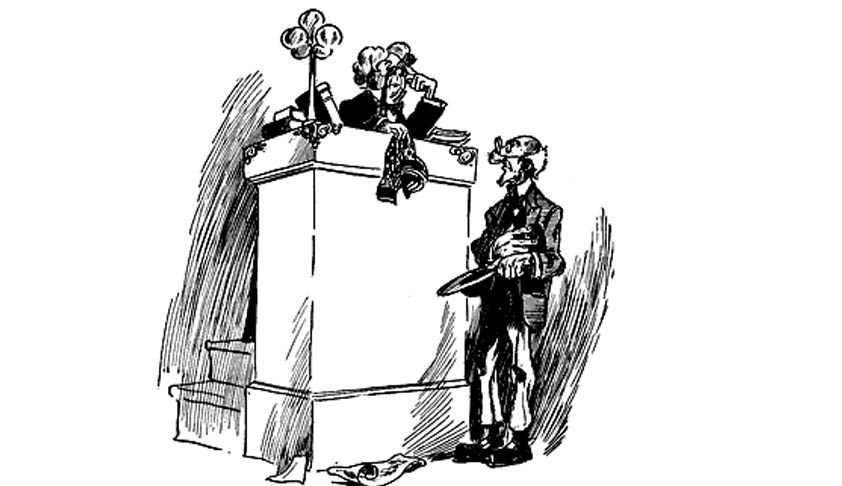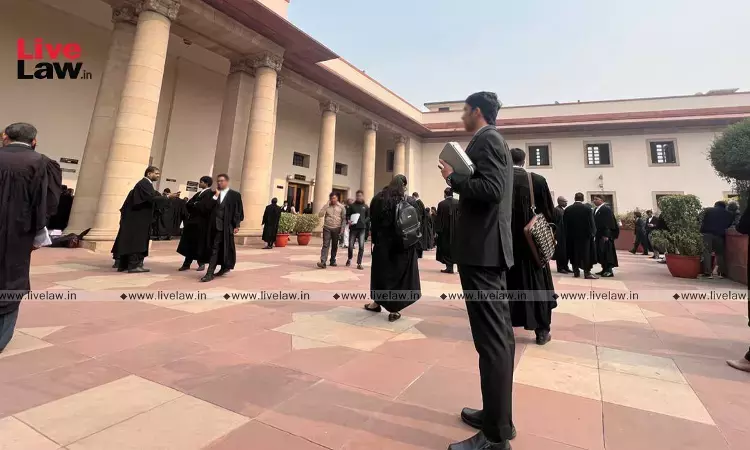
(29) In State of Himachal Pradesh vs. Asha Ram, Asha Ram was tried on the charge of committing rape on one of his daughters, and convicted and sentenced by the trial court. High Court reversed the conviction and acquitted the accused.State filed an appeal in the Supreme Court which restored the conviction and sentence. In para 5 of the judgment, the Court observed as follows:– “The...
(29) In State of Himachal Pradesh vs. Asha Ram, Asha Ram was tried on the charge of committing rape on one of his daughters, and convicted and sentenced by the trial court. High Court reversed the conviction and acquitted the accused.State filed an appeal in the Supreme Court which restored the conviction and sentence. In para 5 of the judgment, the Court observed as follows:–
“The High Court was swayed by sheer insensitivity totally oblivious of growing menace of sex violence against the minors much less by the father. The High Court also totally overlooked the prosecution evidence, which inspired confidence and merited acceptance.It is now well settled principle of law that conviction can be founded on the testimony of the prosecutrix alone unless there are compelling reasons for seeking corroboration. The evidence of a prosecutrix is more reliable than that of an injured witness. The testimony of the victim of sexual assault is vital unless there are compelling reasons which necessitate looking for corroboration of her statement, the courts should find no difficulty in acting on the testimony of a victim of sexual assault alone to convict an accused where her testimony inspires confidence and is found to be reliable. It is also a well settled principle of law that corroboration as a condition for judicial reliance on the testimony of the prosecutrix is not a requirement of law but a guidance of prudence under given circumstances. The evidence of the prosecutrix is more reliable than that of an injured witness. Even minor contradictions or insignificant discrepancies in the statement of the prosecutrix should not be a ground for throwing out an otherwise reliable prosecution case”.
(Emphasis supplied)
(30) Dealing with the allegation that the case was foisted by the mother of victim who was living separately, the court observed in para 13 as follows:-
“It is contended by the counsel for the accused that because of the strained relationship between PW3-mother of the prosecutrix and the accused, the prosecution case has been foisted against the accused at the instigation of the mother and deserves outright rejection. From the evidence it is clearly established that P.Ws. 1 and 2 despite of strained relationship between their mother and father were happily staying with the accused and there is no rhyme or reason as to why the daughter should depose falsely so as to expose her honour and dignity and also expose the whole family to the society risking the outcasting or ostracization and condemnation by the family circle as well as by the society. No girl of self-respect and dignity who is conscious of her chastity having expectations of married life and livelihood would accuse falsely against any other person of rape, much less against her father, sacrificing thereby her chastity and also expose the entire family to shame and at the risk of condemnation and ostracization by the society. It is unthinkable to suggest that the mother would go to the extent of inventing a story of sexual assault of her own daughter and tutor her to narrate a story of sexual assault against a person who is no other than her husband and father of the girl, at the risk of bringing down their social status and spoil their reputation in the society as well as family circle to which they belong to”.
(Emphasis supplied)
(31) In S. Ramakrishna vs. State, the trial Court convicted the appellant under section 376 and 342 IPC while acquitting him for the charges under section 506 IPC and 323, holding that the victim who was returning from the fields to the village was waylaid by the appellant, who committed rape on her after gagging with towel and tying hands with lungi and threatening to kill her family members in case she revealed the incident. After accused left, victim returned to village and informed her parents and thereafter went to police station to give information. The High Court confirmed the decision of trial court and this was upheld by the Supreme Court. In dealing with the prosecutrix and her evidence the Supreme Court observed in para 10.
“A prosecutrix of a sex offence cannot be put on a par with an accomplice. She is in fact a victim of the crime. The Indian Evidence Act, 1872 (in short "the Evidence Act") nowhere says that her evidence cannot be accepted unless it is corroborated in material particulars. She is undoubtedly a competent witness under Section 118 and her evidence must receive the same weight as is attached to an injured in cases of physical violence. The same degree of care and caution must attach in the evaluation of her evidence as in the case of an injured complainant or witness and no more. What is necessary is that the court must be alive to and conscious of the fact that it is dealing with the evidence of a person who is interested in the outcome of the charge levelled by her. If the court keeps this in mind and feels satisfied that it can act on the evidence of the prosecutrix, there is no rule of law or practice incorporated in the Evidence Act similar to Illustration (b) to Section 114 which requires it to look for corroboration. If for some reason the court is hesitant to place implicit reliance on the testimony of the prosecutrix it may look for evidence which may lend assurance to her testimony, short of corroboration required in the case of an accomplice. The nature of evidence required to lend assurance to the testimony of the prosecutrix must necessarily depend on the facts and circumstances of each case. But if a prosecutrix is an adult and of full understanding, the court is entitled to base a conviction on her evidence unless the same is shown to be infirm and not trustworthy. If the totality of the circumstances appearing on the record of the case discloses that the prosecutrix does not have a strong motive to falsely involve the person charged, the court should ordinarily have no hesitation in accepting her evidence”.
(Emphasis supplied)
(32) A rape victim who gives evidence is certainly an injured witness; her mind and phyche are injured. Testimony of any witness who sustained injury at the hands an assailant in an occurrence has to be considered seriously and it has a particular status as her presence at the occurrence cannot be questioned unless there was in fact no molestation and the entire prosecution story is cooked up. No doubt, any such case which may be put forward by an accused is required to be considered carefully by the Court. If there was an incident in which a witness did sustain injury, ordinarily that witness is unlikely to falsely implicate an innocent person, since such a course of action may result in allowing the real assailant to escape; it is unlikely that an injured witness will do so, unless she has a very strong motivation to do so, which aspect, of course, will require consideration at the hands of the Court. Convincing evidence is required to discredit an injured witness. (See Brahma Swaroop V/s. State of UP, Bhajan Singh alias Harbhajan Singh V/s. State of Haryana), Mohd. Imran Khan vs. State (NCT of Delhi), Krishna Kumar Malik vs. State of Haryana. See also Alamelu vs. State .
(33) The full significance of the “rule of corroboration” has been explained by the Supreme Court in the decision referred to above. But, it can never be presumed without exception, that evidence of the victim is gospel truth. (State vs. M.K. Pandey,). To hold that her evidence has to be accepted even if her story is improbable and belies logic would be doing violence to the very principles which govern appreciation of evidence (Tameezuddin vs. NCT Delhi. Accused also has to be protected against false implication, particularly when a large number of accused are involved. While an injured witness ordinarily will not lie as regard the identity of the assailants, there is no presumption that the statement of an injured will always be true or without an embellishment or exaggeration. (S. Ramakrishna vs. State of A.P.).If in any given case, the court is of the opinion that there are some significant weaknesses in the evidence of the prosecutrix, the court would be justified in looking for corroboration. Court cannot insist that corroboration must be only of a particular nature. If the medical evidence indicates injuries, marks or colouration etc. on the body, in particular on the back or chest or the private parts, that can certainly provide ample corroboration. If the victim offered strong resistance, there could be injuries on the accused which an alert I.O. would look for if accused was apprehended without undue delay. In some cases, the state of clothes worn by either the victim or the accused could provide some degree of corroboration. There could be traces of sperm in the clothes of either or on the ground or mat. The victim could have made an oral statement to a parent, near relation or a close friend soon after the act of rape which could corroborate her version in court under Section 157 of the Indian Evidence Act. There could be a judicial or extrajudicial confession by the accused. The purpose of looking for corroboration is not that such evidence by itself should be sufficient to establish the guilt of the accused, but only to satisfy the judicial mind that despite certain weaknesses or inconsistencies or contradictions in her evidence or despite unexplained delay in lodging First Information Statement or despite any defect in investigation, it is safe to act upon the evidence of the prosecutrix and convict the accused. See also Narendra Kumar vs. State (NCT of Delhi).
Other aspects of appreciation of evidence in rape cases.
There has been devastating increase in incidents of rape. Courts need to be more cautious in appreciating evidence. Accused ought not to be acquitted on flimsy grounds. (State of U.P. vs. Mukesh AIR 2012 SCW 6042).
(34) Delay in lodging F.I. Statement (FIS):- A prompt FIS serves a purpose. Delay can lead to embellishment or afterthought as a result of deliberation and consultation. Prosecution (not the prosecutor) must explain the delay satisfactorily. (Thulla Kali V/s. State of T.N.). The court is bound to apply its mind to the explanation offered by the prosecution through it’s witnesses, circumstances, probabilities and common course of natural events, human conduct (Section 114). (Thulla Kali V/s. State of T.N.). Unexplained delay does not necessarily or automatically render the prosecution case doubtful. Whether the case becomes doubtful or not depends on the facts and circumstances of the particular case. The remoteness of the scene of occurrence or the residence of the victim of the offence, physical and mental condition of persons expected to go to the police station, immediate availability or non-availability of a relation, friend or well wisher who is prepared to go to the police station, seriousness of injuries sustained, number of victims, efforts made or required to be made to provide medical aid to the injured, availability of transport facilities, time and hour of the day or night, distance to the hospital or police station, reluctance of people generally to visit a police station and other relevant circumstances are to be considered. The decision in Amar Singh V/s. Balwinder Singh may be usefully referred to.
If any explanation is offered, the same requires consideration. If an explanation is offered but found not acceptable, it is as if no explanation is offered. In such a case, it may imply that there was opportunity and possibility of anembellishment or exaggeration finding a place in the FIS and the court must look for other indications available on the record supporting such a possibility. But an argument that the version in the FIS is wholly false, i.e., not merely embellishments or exaggeration, must be based on strong circumstances, including motive for such conduct.
(35) This is much more so in cases of sexual offences, in our tradition-bound society. (Thulsidas Kanotkar V/s. State of Goa ). The stigma which society attaches to a girl or woman, married or otherwise, in case she is subjected to any sexual offence discourages the readiness of people to report such offences to police. The word “delay” does not have fixed, permanent or immutable connotation. What is regarded as delay in one set of circumstances may not be regarded as such in a different set of circumstances.
(36) In State of U.P. V/s. M.K. Pandey (AIR 2009 SC 711), the Supreme Court observed that in a case of rape, absence of explanation for delayed lodging of FIS would not affect the appreciation of evidence. In State of H.P. V/s. Prem Singh , the court observed that delay in a case of sexual assault cannot be equated with delay in a case involving other offences since several factors weigh in the mind of the victim and members of her family. In a traditionbound society like ours, particularly in rural areas, it would be quite unsafe to throw out the prosecution case merely on the ground of delay in lodging FIS. In Satyapal V/s. State of Haryana , the court observed that in rape cases delay in lodging FIS is a natural phenomenon. See also Dildar Singh vs. State of Punjab , State of Punjab vs. Ramdev Singh , State of Punjab vs. Gurmit Singh.
(37) Delay in forwarding FIR to magistrate:-
While considering the delay in FIR reaching the jurisdictional magistrate, court has to bear in mind the credit worthiness of the ocular evidence adduced by the prosecution and see if such ocular evidence is worthy of acceptance; the element of delay in registering FIR or sending FIR to the magistrate by itself, would not in any manner weaken the prosecution case. (Balram Singh Vs. State of Punjab). Where the FIR contained only a brief statement of events, the delay in sending the FIR to court could not have been to concoct a false case against the accused. If the FIR had been cooked up after the inquest and autopsy were over, many more matters or details could have been incorporated in the FIR. The delay, in these circumstance, cannot, by itself, throw out the prosecution case in its’ entirely; such delay cannot be the sole reason for discarding the prosecution version as being fabricated, if reliable evidence has been produced against the accused. Delay in sending FIR to court may provide basis for suspicion that the FIR was recorded much later, to set up a distorted version. The purpose of Section 157 Crl. Pr. Code is to ensure fair trial without there being any occasion for falsification or introduction of facts belatedly. (Sahdeo Vs. State of UP, Sunilkumar Vs. State of Rajasthan, Sarwan Singh Vs. State of Punjab, Ishwar Singh Vs. State of UP, Rabindra Manto Vs. State of Jharkhand). In a case where there was delay of four days in sending FIR to court, factors such as immediate holding of inquest, removal of deadbody to police premises, obtaining authorization by DMO to conduct autopsy during the same night etc were held to suggest spontaneity of FIR sufficient to reject plea of anti-timing of FIR. (Paramjit Singh Vs. State of Punjab). Delay in sending the FIR to court would not dislodge the other evidence. (SarveshNarain Shukla Vs. Dasroga Singh).”
(38) Defects in investigation:-
That the I.O. did not conduct investigation properly or diligently, cannot be a ground to discredit the evidence of the prosecutrix, since she had no control over the investigation agency. It was held in a case of abduction followed by rape, that failure of the I.O. to trace out the car or it’s driver did not discredit the evidence given by the prosecutrix. (Gurmit Singh’s Case). However, the court must ensure that there has been no serious prejudice to the accused or failure of justice as a consequence of defects in investigation. In Kashinath Mondal vs. State of W.B. absence of semen was reported due to delay in chemical examination. Supreme Court held that delay on the part of the investigator in sending vaginal swat for chemical examination did not affect the prosecution case.
(39) Injuries on prosecutrix:- In every case of alleged rape, it is the duty of the I.O. to cause the victim to be medically examined, preferably by a lady doctor. It is necessary to verify if the victim sustained injuries or marks on any part of her body and in particular, backside, breasts, face and lips, thighs, private parts including the vulva, vagina and hymen. Ordinarily, in case of sexual intercourse by use of force and compulsion, one could expect injuries on some of the parts of body indicated above, particularly in the case of young girls and unmarried women; such injuries need not occur in cases where consent of the female was obtained by practicing fraud, or on account of mistaken identity, or by instilling fear of death or of hurt or of a female of unsound mind, or affected by intoxication and the like. Presence or absence of injuries may be relevant to decide if there was penetration or if the act was consensual or not. In cases of rape referred to in Section 114A of the Evidence Act, if the victim states in her evidence before the court that she did not consent, the court shall presume that she did not consent. The presence or absence of injuries is as much relevant for the prosecution as for the accused. This may be relevant even in deciding whether there was penetration forcibly or in the case of young girls in deciding whether there was penetration at all. Even in the case of girls, absence of marks of violence on private parts or elsewhere may merely suggest want of violent resistance on the part of the victim. (Gurcharan Singh V/s. State of Haryana, Krishnalal V/s. State and O.M. Baby vs. State of Kerala). Where the victim was recovered almost after three weeks., signs of forcible intercourse would not persist for such a long period. In the case of forcible rape, it is wrong to assume that then would be some injury on external or internal parts of the victim, who according to the doctor who examined her, was habituated to sexual intercourse. (State of U.P. vs. ChoteyLal).If the girl is below 16 years of age, consent is immaterial as seen from “Sixthly” of Section 375. In the case of delayed FIS, medical examination may be belated and hence the doctor may not be in a position to observe any injuries or marks. Statements made “soon” after the occurrence to close relations or friends, if spoken to in court by the latter could provide acceptable corroboration to the evidence of the victim in cases where the court is satisfied that some corroboration is necessary. There is no likelihood of physical injury if the victim was a woman habituated to sexual intercourse. (Fateh Chand V/s. State of Haryana). Medical evidence has to be appreciated in the light of ocular evidence. (Satyapal V/s. State of Haryana).
(40) In Rafiq V/s. State of U.P, the court observed:-
“Indeed, from place to place, and from age to age, from verifying lifestyles and behavioural complexes, inferences from a given set of facts oral or circumstantial, may have to be drawn not with dead uniformity but realistic diversity test rigidity in the shape of rule of law in this area be introduced through a new type of precedential tyranny. The same observation holds good regarding the presence or absence of injuries on the person of the aggression or the aggressed” (emphasis supplied)
The Supreme Court has confirmed conviction in several cases of rape of girls despite non-existence of injuries on the date of medical examination (Rafiq V/s. State of U.P.). See also State of Rajasthan vs. Noor Khan, Balwant Singh and others vs. State of Punjab).
(41) Injuries on accused: Medical examination of the accused soon after the incident can provide some evidence. Accused can be subjected to such examination under Section 53 Cr.P.C. (See also Section 54). There need not be injuries on accused in every case of rape. It depends on the force used by him and the nature and degree of resistance offered by the victim. Presence of dried seminal fluids on the persons or their clothes or at the scene should be looked for. Effusions or dried blood on the respective organs may also be looked for. Bruising and laceration of the external genitals also should be noticed. Lacerations or tears in hymen as also the male organ should be looked for.
(42) Child witness:- A child is susceptible to tutoring and hence the court must look for indications of tutoring. Yet, a child is often a witness of truth, on account of his or her innocence and incapacity for partisan motivation. A child witness satisfying the requirements of Section 118, Evidence Act is a competent witness. The question of administering oath has to be decided according to the provisions of the Oaths Act. Even a child who has not taken an oath is a competent witness. The evidence of a child witness, if found reliable, can be the basis for conviction. See MdSugalEsa vs. King EmperorAIR 1946 PC 3, Rameshwar’s case. It is however necessary to scrutinize the evidence of the child carefully in view of possibility of tutoring. Dattu Ramrao Sakhare and others vs. State of Maharashtra. See also Suryanarayana vs. State of Karnataka, Nivrutti Pandurang Kokate and Others. State of Maharashtra, Golla Yelugu Govindu vs. State of A. P , Ratansinh Dalsukhbhai Nayak vs. State of Gujarat.
There is no legal principle that a child would not be able to recapitulate facts in his on her memory. A child is always receptive to abnormal events. It may be that a child may not remember all the details of the occurrence, but that will not detract from acceptability of her evidence. When dealing with evidence of the victim of crime who was a child, all courts should remember the words spoken in Rameshwar’s case and quoted in para 4 of this paper.
(43) Witnesses from rural areas:- In appreciating evidence, court cannot judge evidence of witnesses from rural background by the same standards of exactitude and consistency as that of witnesses with urban background. (Shivaji Sahebrao Bobade and another vs. State of Maharashtra).
A rustic witness who is subjected to fatiguing, taxing and tiring cross-examination for a long to me is bound to get confused and make some inconsistent statements. Some discrepancies are bound to occur if a rustic witness is cross-examined at length. The discrepencies noticed in such a witnesses’ evidence should not be blown out of proportion. To do is to ignore the hard realities of village life and give undeserved benefit to the accused. His evidence should be appreciated in its’ totality. The rustic witness, as compared to an educated witness, is not expected to remember every small detail of the incident etc, more particularly when his evidence is recorded after a lapse of time. If he was related to the victim, he was bound to suffer shock. All these relevant considerations must be borne in mind while appreciating the evidence of a rustic witness. State of U.P. vs. Krishna Master.
This is the last part of four part series.Part I, Part II and Part III can be read here
Justice U.L.Bhat is the former Chief Justice of Gauhati High Court and High Court of Madhya Pradesh.





